| 14 |

|
Ion Chromatography (IC), a type of liquid chromatography, is used to measure the concentration of ionic species by separating them based on their interaction with the column resin. Ionic species are generally separated depending on species and size of charged molecules present in the sample. IC (Thermoscientific; Dionex ICS-6000) is used to analyse molecules in their ionic forms (cations and anions). Suitable solvent-soluble solid and liquid form of the sample can be analyzed in this technique. IC has a broad application in analysing samples from the food industry to the pharmaceutical industry. Autosampler capacity: 50 positions of 5.0 ml size Detectors: Conductivity Detector/Electrochemical Detector Available columns: IP, AS7 (4x250)mm, IP, CS16, (5x250)mm |
| 15 |
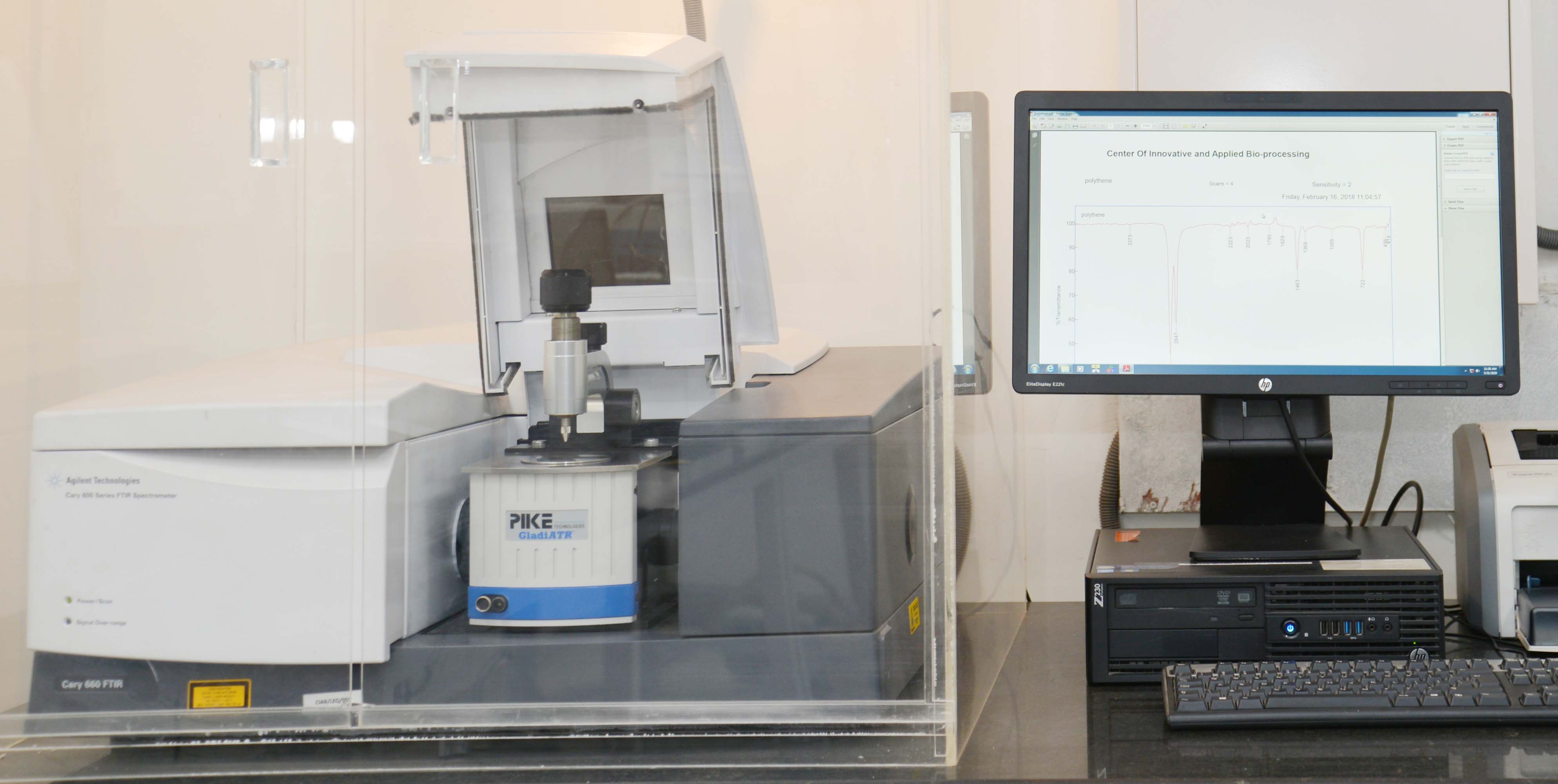
|
Fourier-Transform Infrared (FTIR) spectroscopy is a technique used to obtain an infrared spectrum of absorption or transmission of a solid, liquid or gas samples. FTIR is a technique used to understand a wide range of functional groups present in any organic and inorganic samples. An FTIR spectrometer simultaneously collects high-spectral-resolution data over a wide spectral range. FTIR (Agilent Cary 660) records the IR spectra of a sample in the MID IR range of 9000 – 350 cm-1. The solid and liquid form of the sample can be analyzed using ATR (Attenuated Total Reflection) accessories in this technique. Sample preparation: pellet pressing kit is available for solid samples |
| 16 |
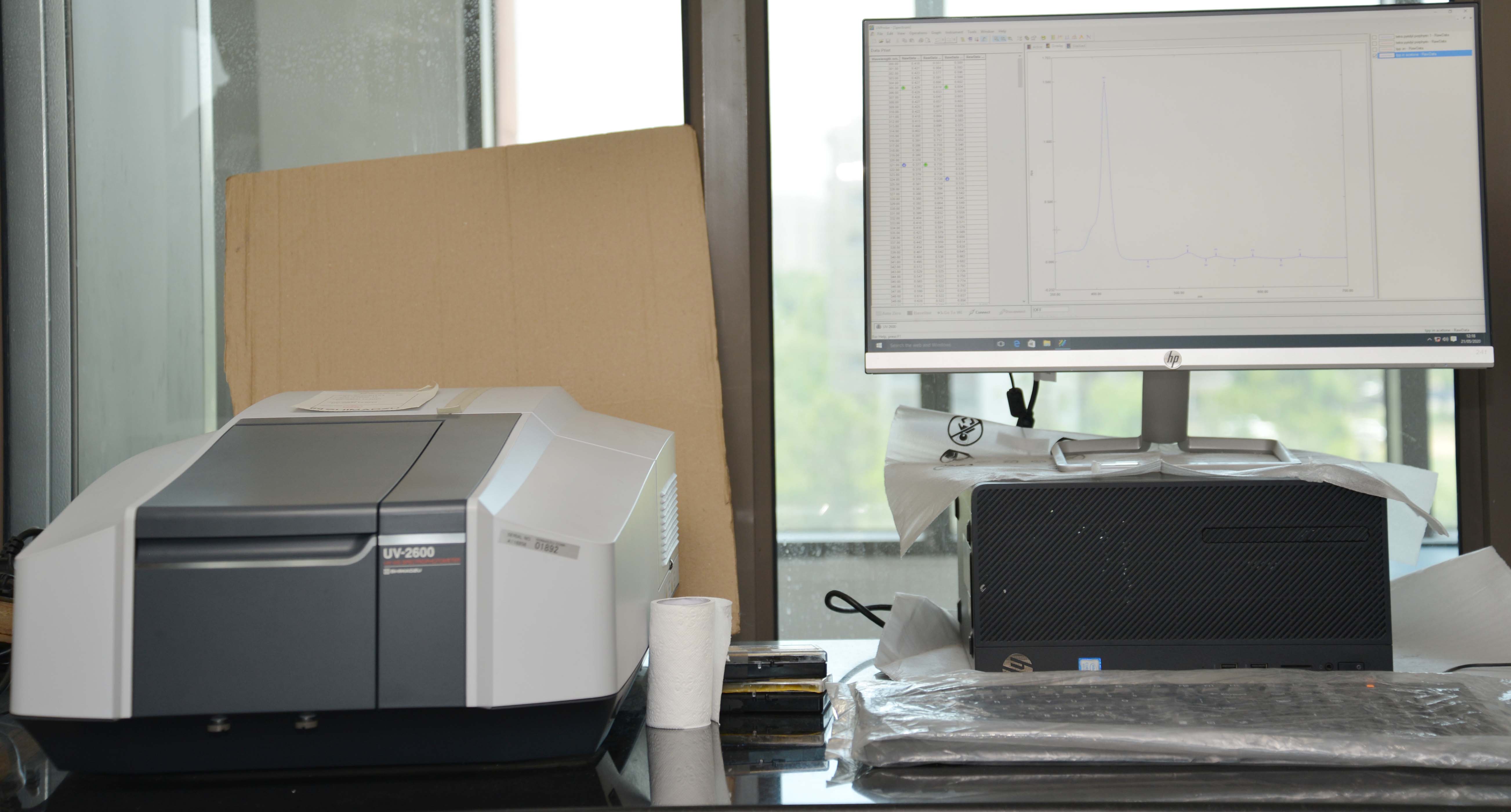
|
Ultraviolet-Visible (UV-Vis) spectrophotometer is an absorption spectroscopic technique used to determine the amount of light absorbed by a sample in the range of 190 to 900 nm. UV-Vis (Shimadzu UV-2600, Japan) spectrophotometer can be used for both solid and liquid samples. In the case of liquid samples, the spectrum can be recorded at temperature 10 to 60 C). In the case of solid samples, DRS (Diffuse Reflectance Measurement) accessories are used to collect the spectrum of a sample. It has wide applications in material chemistry, inorganic chemistry, drug discovery, and pharmaceutical or pesticide analysis and to quantify the unknown concentration of a specific compound in the mixture. |
| 17 |
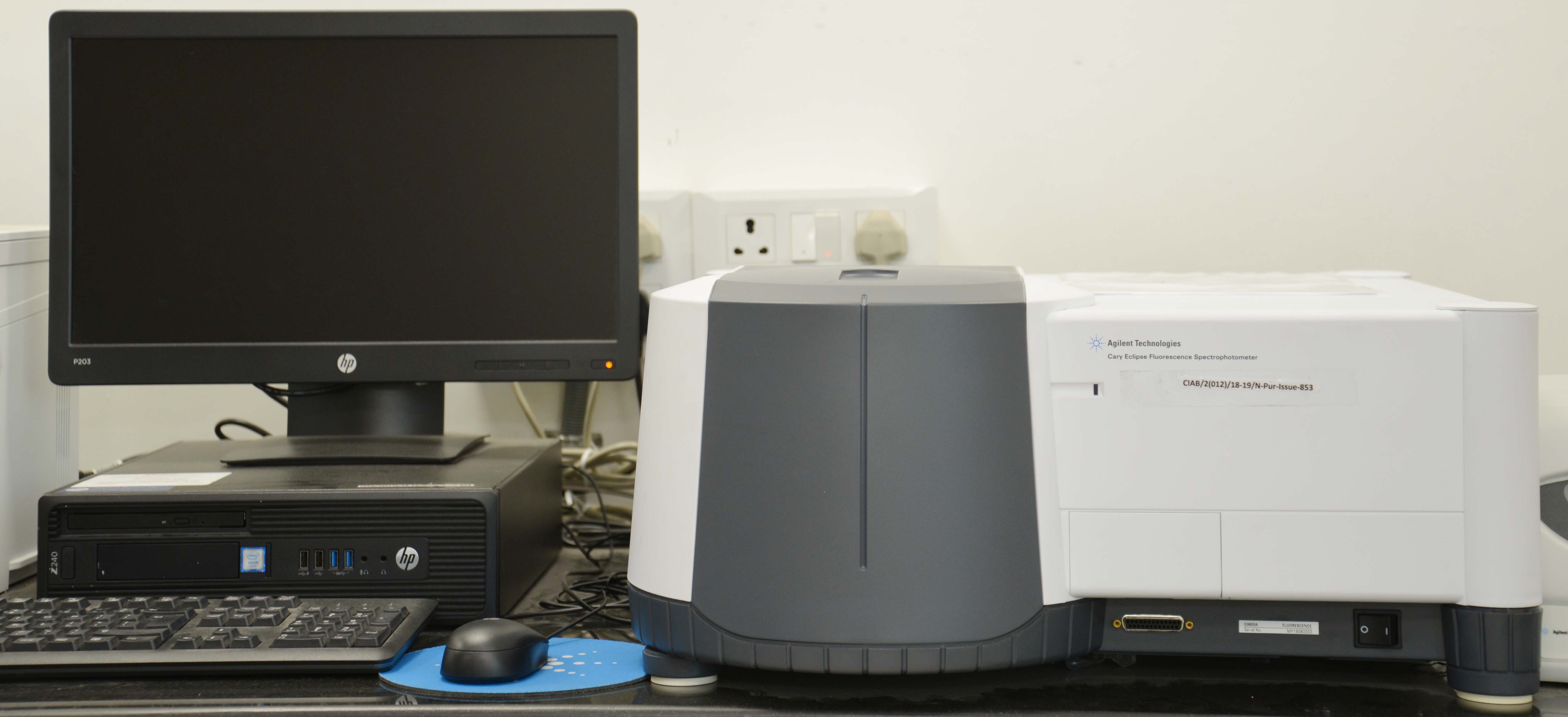
|
Fluorescence Spectrophotometer is a type of spectroscopic technique used to analyse/study/measure fluorescence (emission of light) from a compound or material of interest. Fluorescence spectrophotometer (Agilent Cary Eclipse, USA) can be used for analysing both solid and liquid samples. In the case of liquid samples, the spectrum can be recorded at a temperature range of 10 to 60 C. Fluorescence spectrophotometer is used for recording fluorescence, luminescence and phosphorescence of a material or a drug of interest. The application of this instrument has a wide application in material chemistry, drug discovery, pharmaceutical or pesticide analysis, antigen-antibody interactions. |
| 18 |
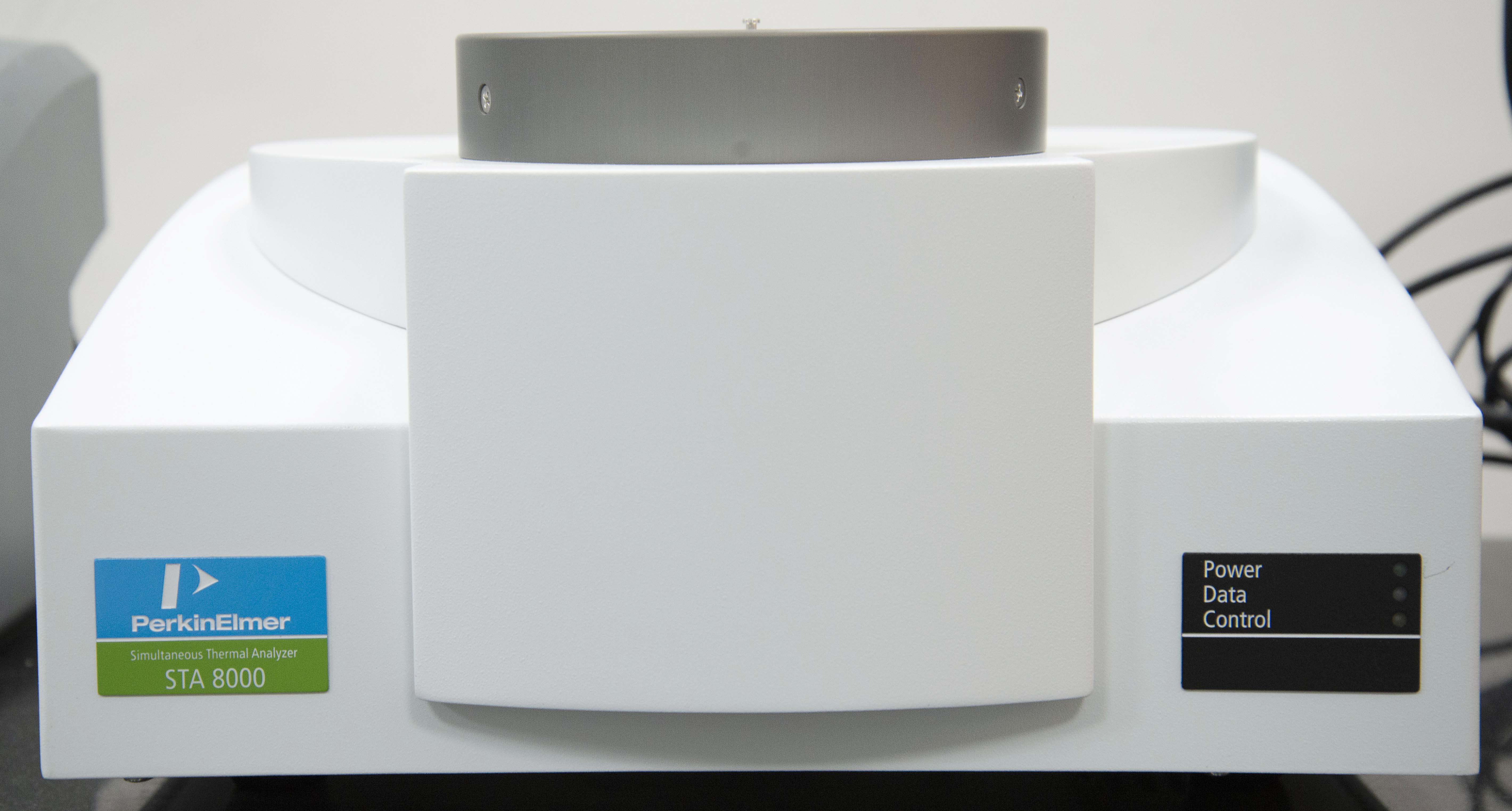
|
Simultaneous Thermal Analyzer (STA) is one of the thermal analysis techniques in which the change in the mass of a substance is monitored as a function of temperature and time as the sample specimen is subjected to a controlled temperature program in a controlled atmosphere. Moreover, it provides fast, accurate transition midpoint (Tm) and directly measures the enthalpy (ΔH) and temperature (Tm). STA (Perkin Elmer STA 8000 technique) consists of a sample pan that is supported by a precision balance, enabling to get TGA thermographs and DSC curves of a solid or non-volatile (e.g. ionic liquids) samples simultaneously. The working temperature range for STA 8000 is between 15 and 1600 °C, and the amount of sample required is approximately 2.0 -5.0 mg. |
| 19 |
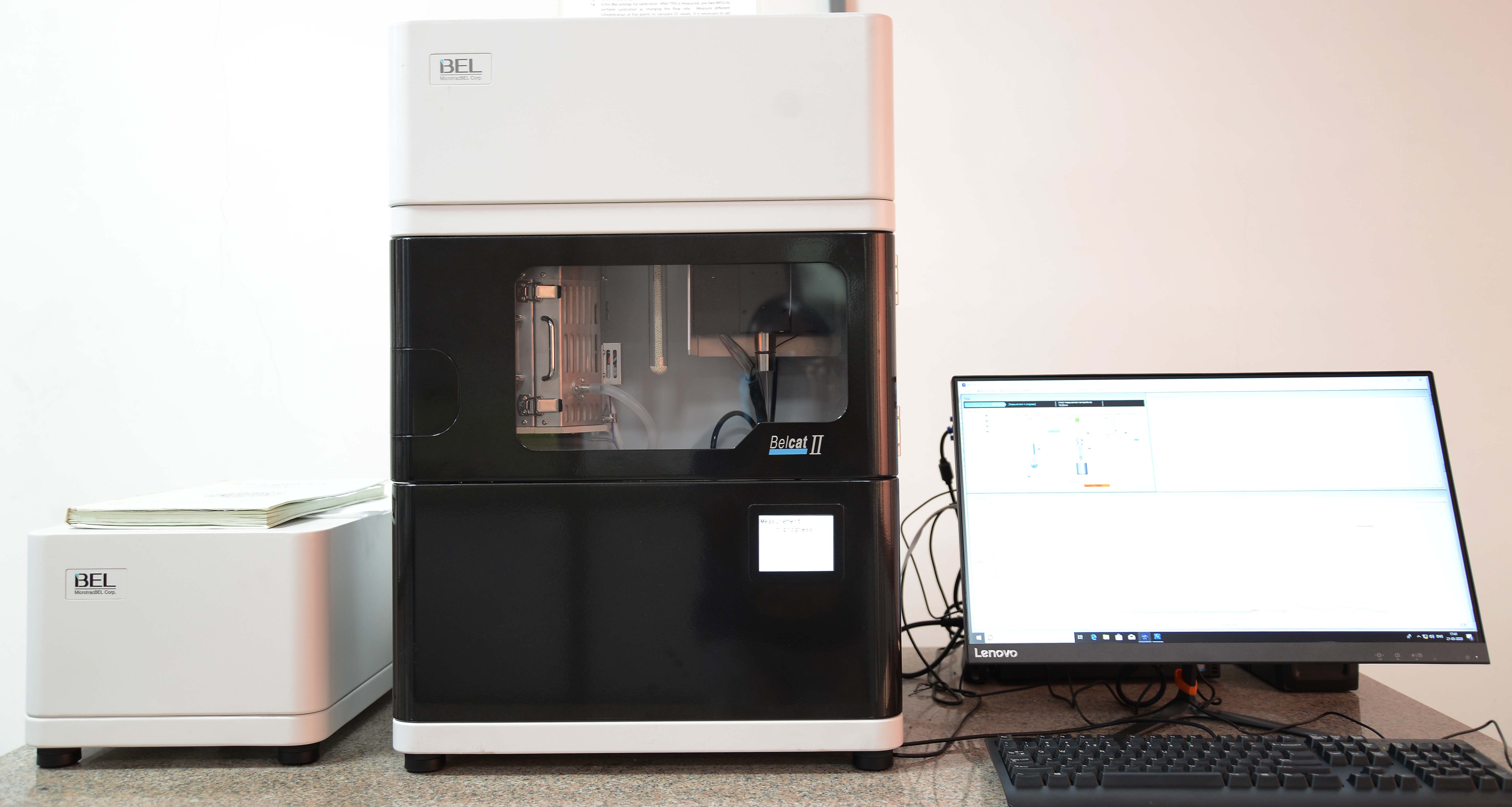
|
Chemisorption Analyser is an analytic technique which is very useful for investigating surface characterisation of heterogeneous catalysts comprehensively. BEL CAT II, a fully-automated Chemisorption Analyser, offers an extensive range of techniques such as Temperature Programmed Desorption (TPD), Temperature Programmed Reduction/Reaction (TPR), Temperature Programmed Oxidation (TPO), BET single point measurement, pulse titration and vapour sorption. Chemisorption Analyser is generally used to quantify a number of acidic and basic sites of a heterogeneous catalyst by NH3 and CO2-TPD and to study the metal dispersion by TPR. BEL CAT II can also be used for TPO studies for oxidation catalysts and coke deposition of solid catalysts. The samples can be analysed at a working temperature range of ambient to 800 C. The amount of sample required is between 50 and 100 mg, and the sample should be free from organic components. |
| 20 |
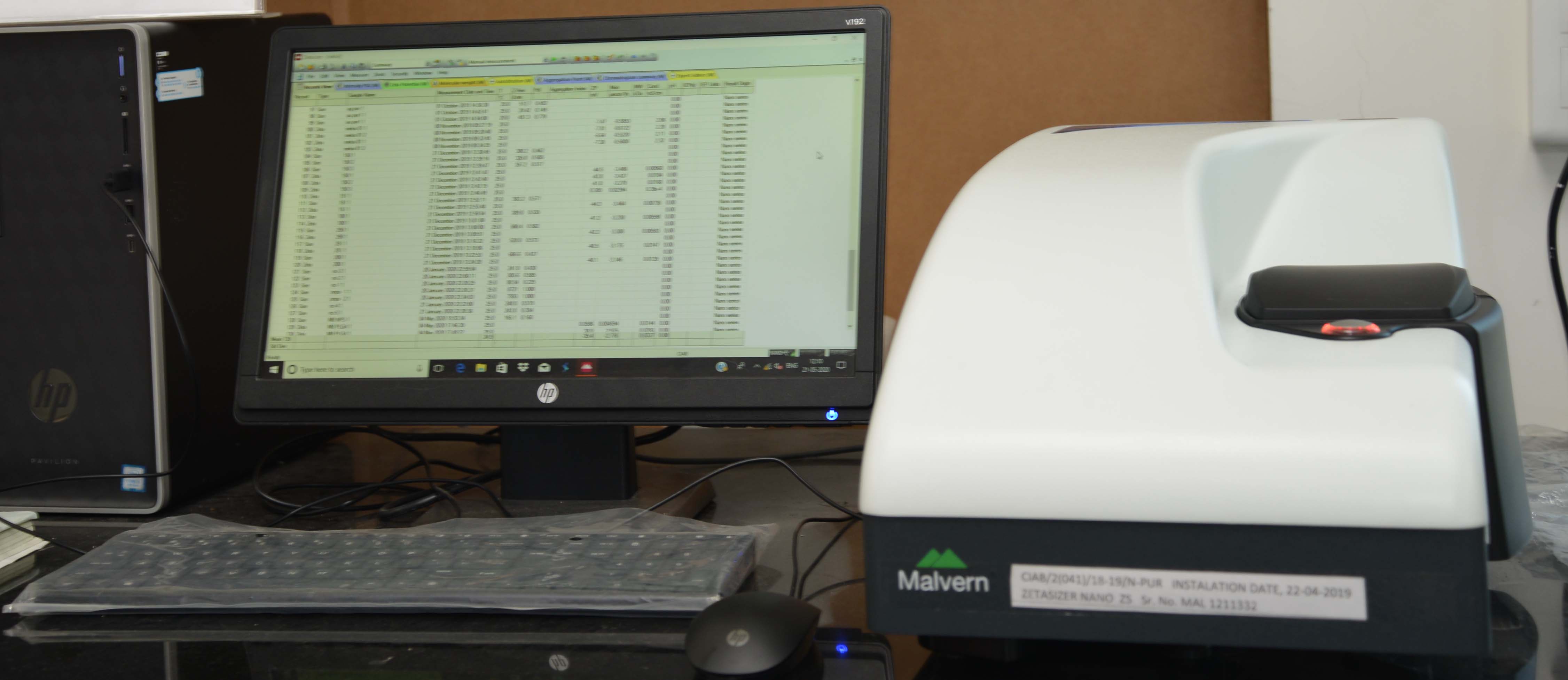
|
Particle Size Zeta Potential Analyser (NanoZS, Make: Malvern, UK)is a particle and molecular size analyzer for the detection of aggregates and measurement of small or dilute samples using dynamic light scattering. The Nano ZS also has a zeta potential analyzer which uses electrophoretic light scattering for particles, molecules and surfaces, and a molecular weight analyzer using static light scattering. Particle and molecule size, translational diffusion, electrophoretic mobility, the zeta potential of particles at high and low concentrations can be measured using ZS. Particle Size Zeta Potential Measuring Analyser can measure the size ranges from 0.3 nm to 10 microns (diameter). The instrument is ideal for determining the size and charge of nanoparticles, macromolecules, etc. |
| 21 |
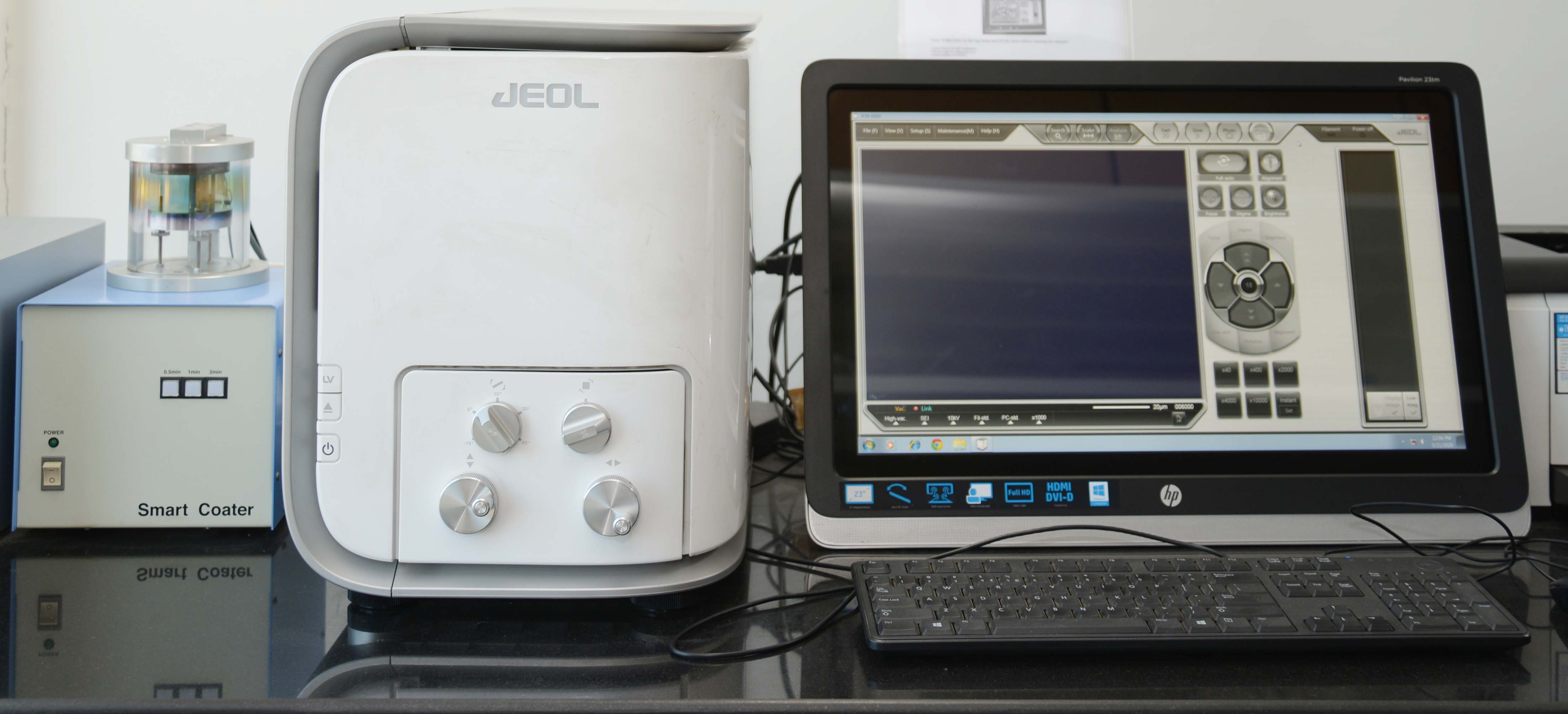
|
Bench-top Scanning Electron Microscope (SEM) is a type of microscope technique which produces an image by scanning the surface of the samples with the aid of a beam of electrons. The electrons emitted via electron gun generally made up of tungsten filament cathode, interact with the atoms or molecules on the surface of the sample. The captured electrons mainly the secondary electrons (SE) and the backscattered electrons (BSE) produce electronic signals which are detected by a detector and can be viewed as an image on a computer screen. Benchtop SEM (JEOL. Japan) can capture images of particles of the sample having a size of greater than 1 μm The biological samples (e.g., immobilized enzymes, seed samples and treated leaves), food samples (e.g., starches, proteins, food product morphology and edible films), catalyst (e.g., zeolites, metal oxides, nanomaterial) and any sid materials of interest can be analysed to study morphology. However, this depends upon the samples (visibility >10μm in some cases up to 2μm). Sputter coating information: Gold Coater or sputterer Magnification and resolution range: 2mm to 2 μm Resolution range: ×10 to ×60000 |
| 22 |
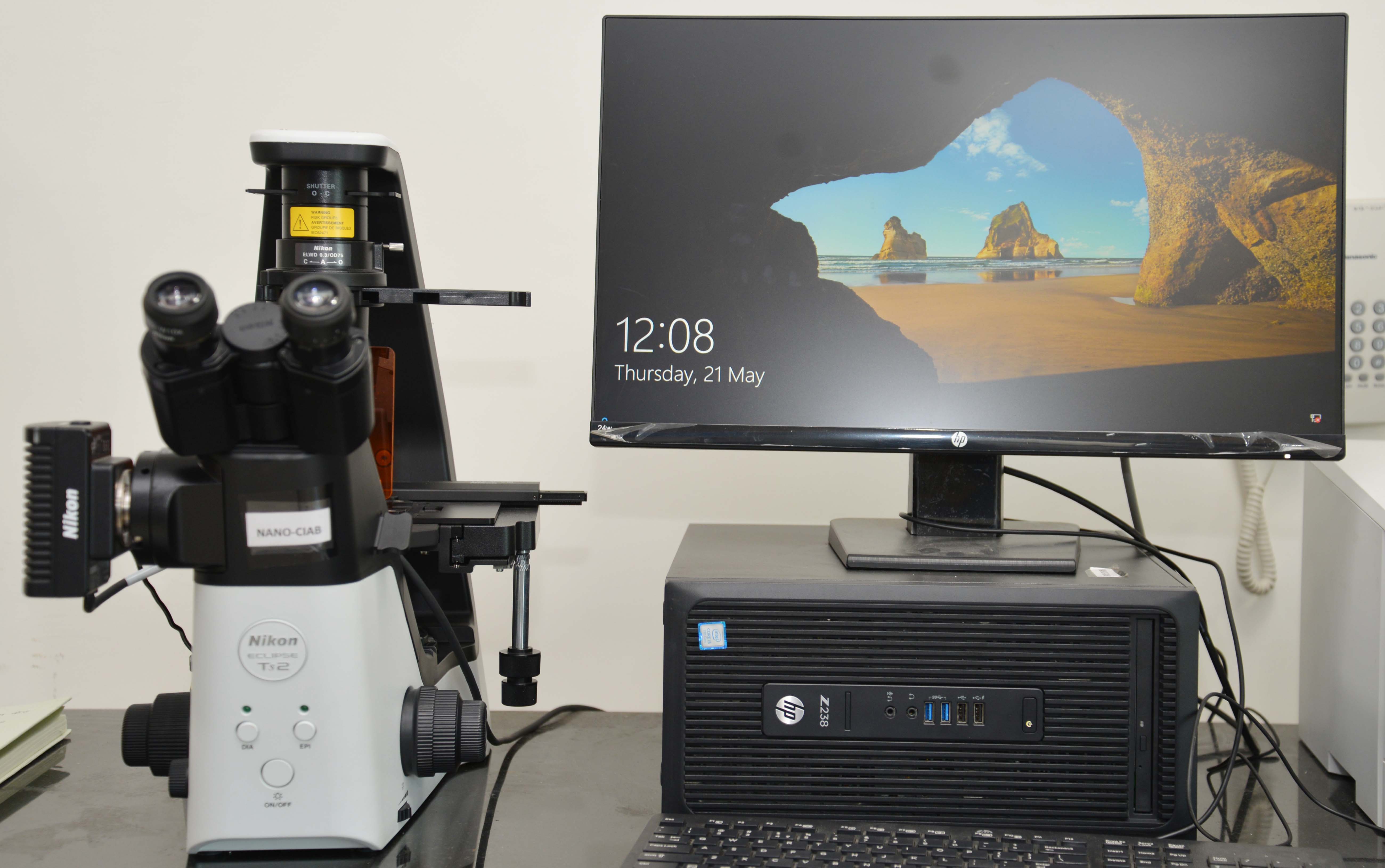
|
Inverted Fluorescence Microscope has the objective lens facing upwards in order to view the sample from below. It is used for medical and biological research applications, allowing visualization within cell culture flasks and live-cell chambers. It is also used for observation and experiment of live samples such as cell culture. In various experimental processes of basic research, including cell biology and molecular biology, the inverted microscope is used to check and observe the confluence, health, and fluorescent protein expression of cultured cells accurately and efficiently. The important function of Inverted fluorescence microscope (TS2FL; Nikon, Japan) is to irradiate the sample with a chosen band of wavelengths, and then to separate the weaker emitted fluorescence from the excitation light. The samples are generally stained with fluorescent dyes before viewing them under this microscope. The microscope is also capable of detecting autofluorescence from biological and other samples. Magnification range: 20, 40 and 60X |
| 23 |
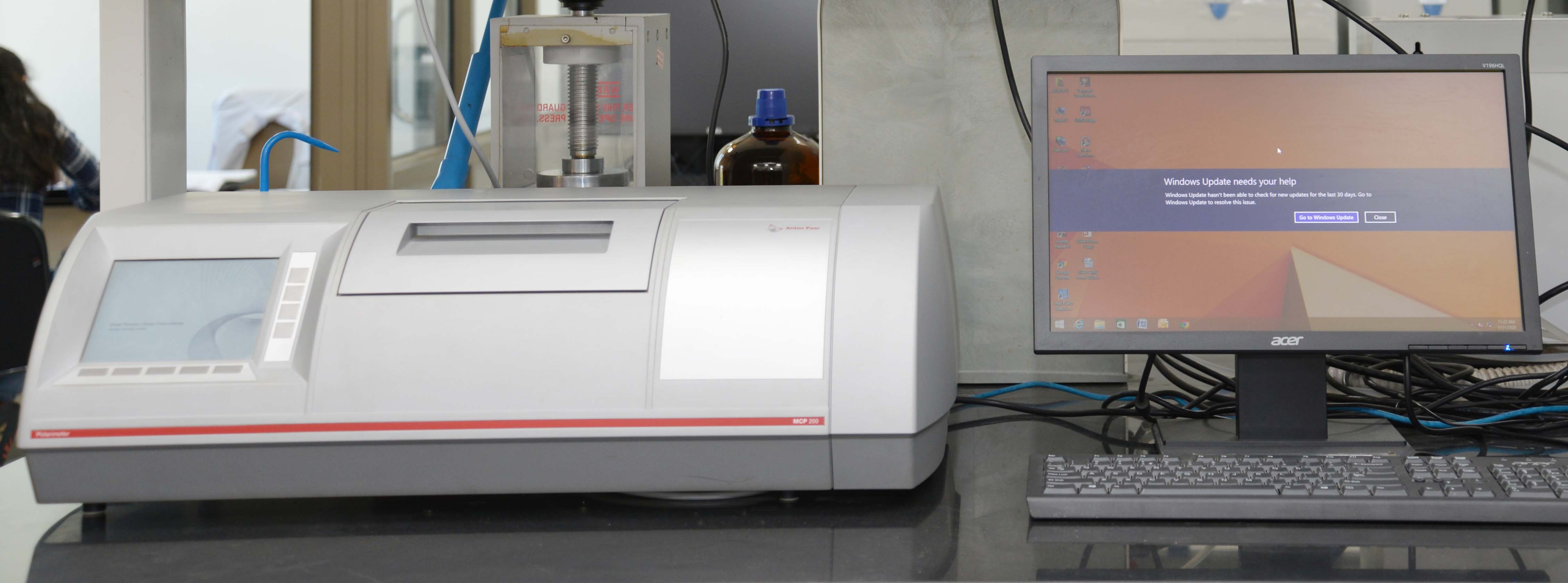
|
Polarimeter is an optical instrument which measures the rotation of plane polarised light caused by optically active substances. Polarimeter (Anton Paar MCP 200) offers to study the optical rotation and specific optical rotation of optically active substances such as organic, inorganic and biological compounds. This instrument has a broad application in the sugar industry and the pharmaceutical industry. The solid and liquid form of samples can be analysed in this instrument to know the optical activity. |
| 24 |
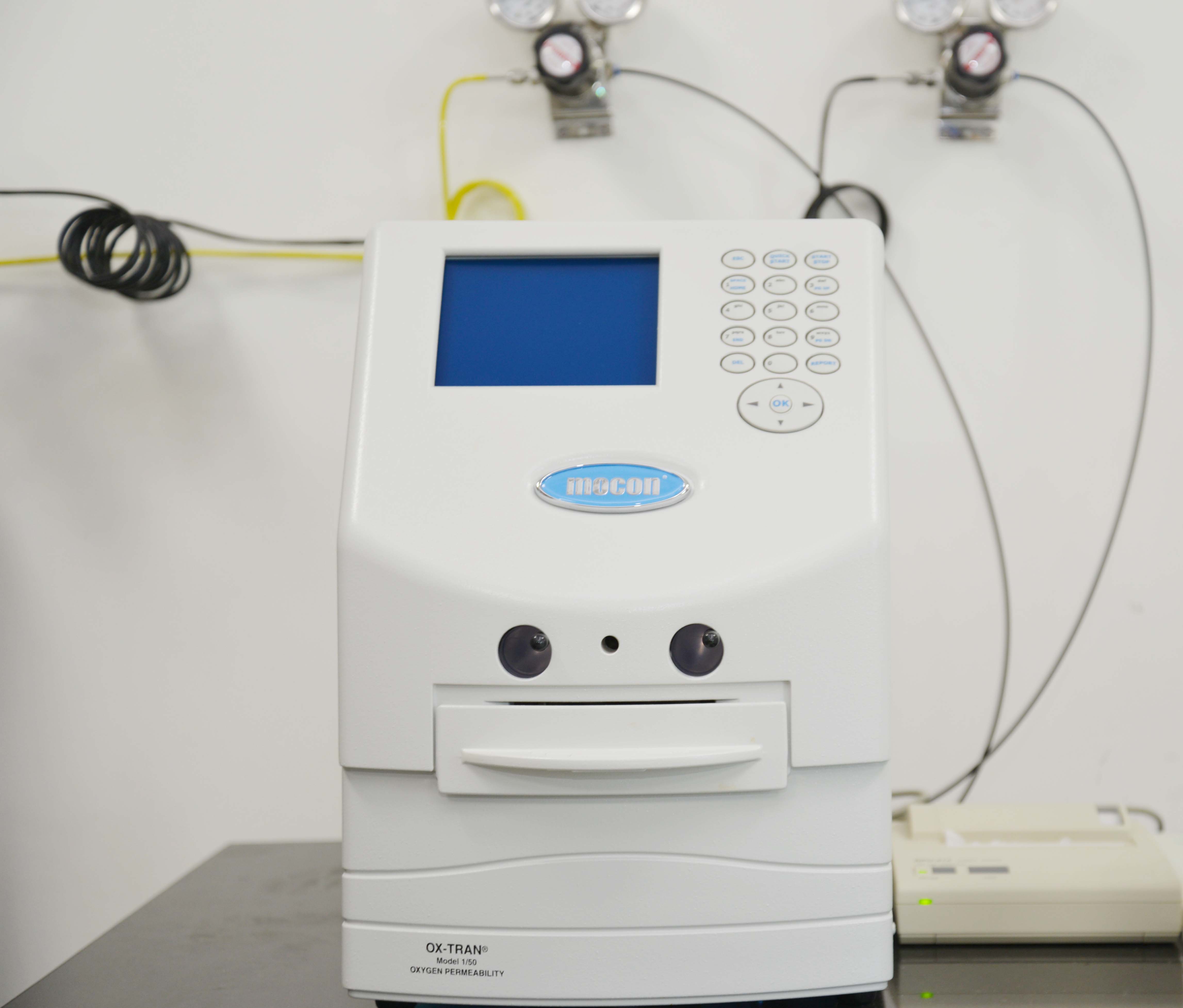
|
Oxygen Transmission Rate (OTR) Tester is used to measure the amount of oxygen gas that penetrates through the sample for a specific time. The sample is mounted between two chambers at ambient atmospheric pressure and acts as a sealed semi-barrier. A stream of nitrogen that acts as a carrier gas which passes through one chamber slowly and the other chamber which is filled with oxygen gas at a controlled pressure. OTR tester (OX-TRAN) can be used to study related to oxygen permeation of food and drug packaging materials, mainly in the form of films. |
| 25 |
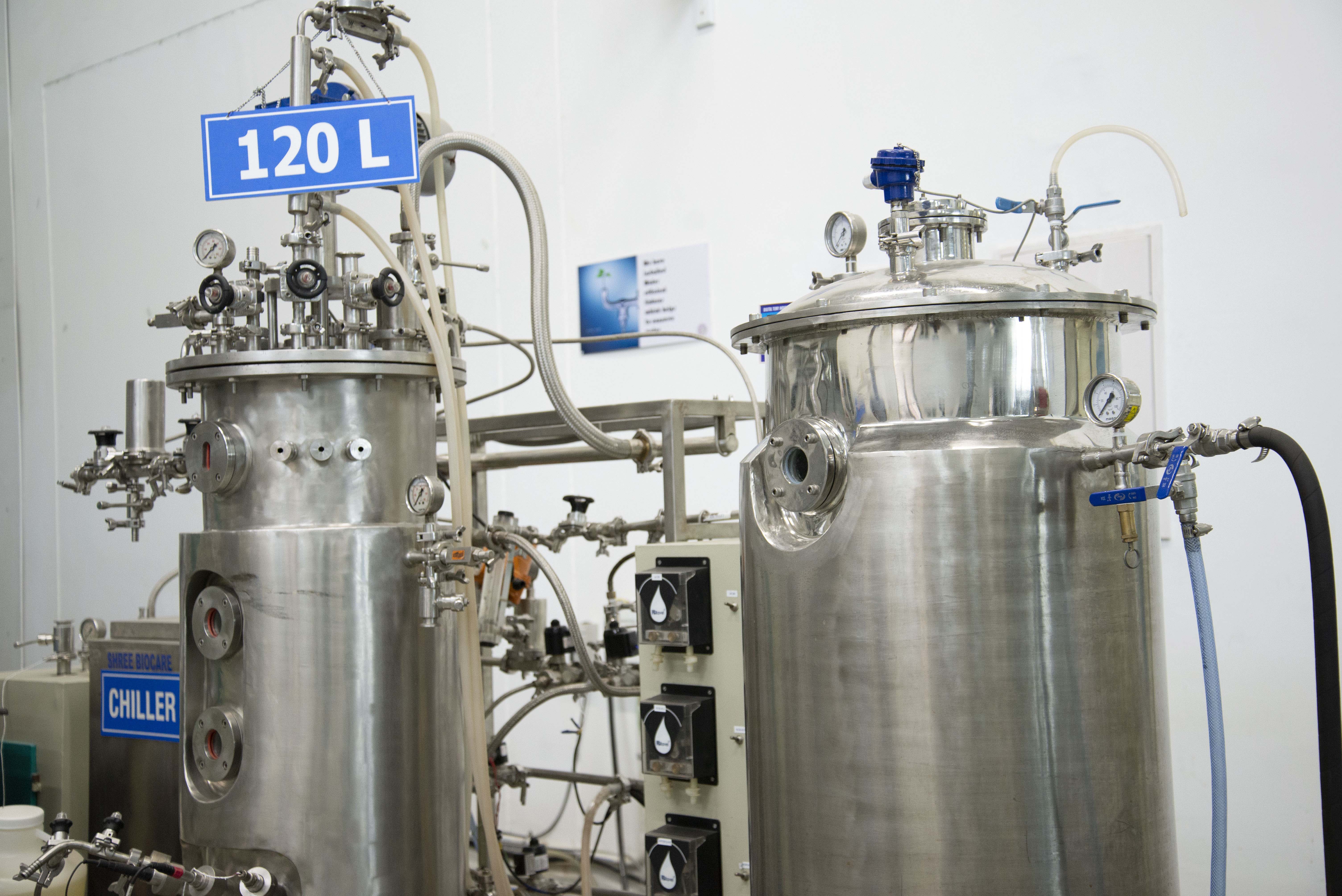
|
Online monitored Fermentor is a device in which various parameters such as pH control, temperature, aeration, and agitation can be controlled for the production of specific high-value products in the presence of enzymes or living cells. Fermentors are extensively used in the production of chemicals, biopharmaceuticals and food products. CIAB is well-equipped with pilot-scale fermentor with a capacity of 120 L. This fermentor is currently used for the production of bacterial, fungal and yeast-based products. This facility is available for industrial-scale production of microbial enzymes and high-value microbial products from wild type and genetically modified strains. Monitoring probes: pH and Temperature. |